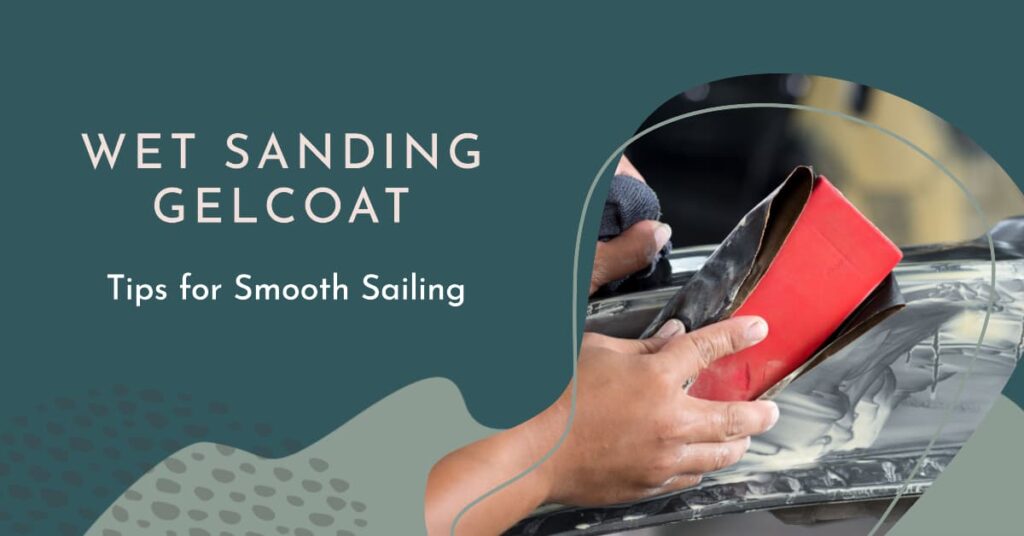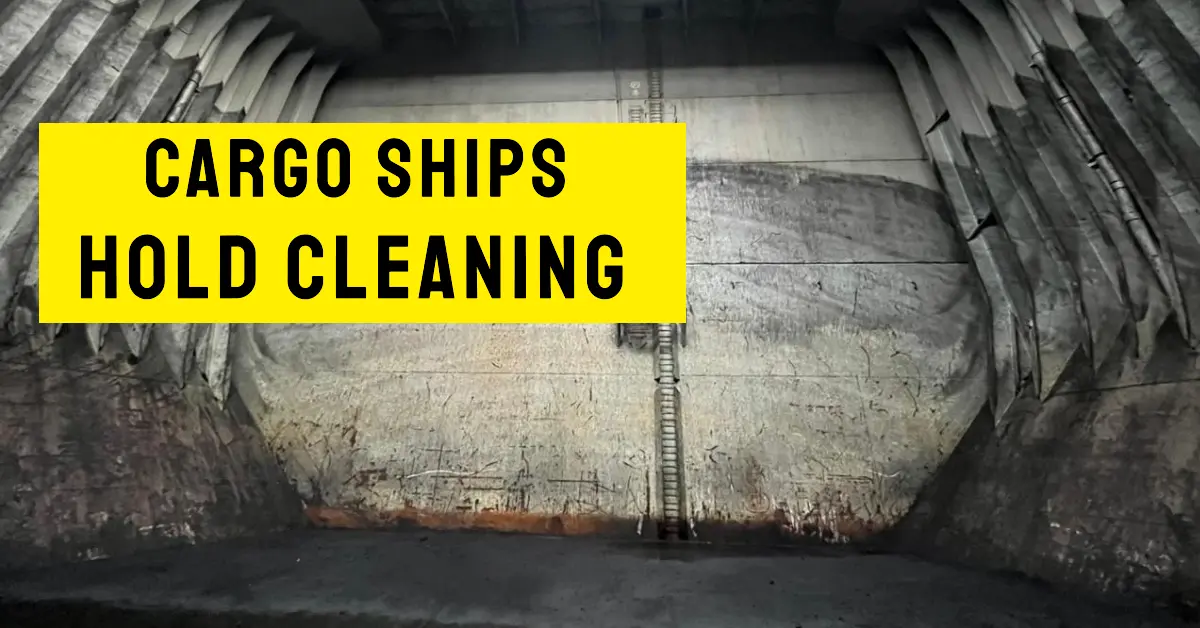Wet sanding gelcoat is a process that helps restore the shine and luster of gelcoat surfaces.
Gelcoat is a material commonly used to protect the fiberglass hull of boats, but it can also be found on other surfaces like RVs, pools, and bathtubs.
Over time, gelcoat surfaces can become dull, faded, or scratched due to exposure to the elements, UV rays, and other environmental factors. Wet sanding can help remove the damaged layer of gelcoat and reveal a smooth, shiny surface underneath.
Understanding gelcoat is the first step in wet sanding. Gelcoat is a type of resin that is applied to the surface of fiberglass to provide a protective layer. It is thicker and more durable than regular paint and can withstand exposure to saltwater, sunlight, and other harsh conditions.
Wet sanding gelcoat requires careful attention to detail and the right tools and materials. You will need to use a specific type of sandpaper, a sander, and a polishing compound to achieve the desired results.

Key Takeaways
- Wet sanding is a process used to restore the shine and luster of gelcoat surfaces.
- Gelcoat is a type of resin that is applied to the surface of fiberglass to provide a protective layer.
- Wet sanding gelcoat requires careful attention to detail and the right tools and materials.
Understanding Gelcoat
What is Gelcoat?
Gelcoat is a protective layer applied to the exterior of a fiberglass boat. It is a pigmented resin that is sprayed or brushed onto the surface of the fiberglass mold before the boat is built.
Gelcoat is the first layer of protection against UV rays, water intrusion, and general wear and tear. It also provides a smooth and glossy finish to the boat’s exterior. Gelcoat is available in various colors, and it is often matched to the boat’s color scheme.
Importance of Gelcoat
Gelcoat is essential to the longevity and appearance of a fiberglass boat. Without it, the fiberglass would be exposed to the elements and would break down quickly. Gelcoat provides a barrier against water intrusion, which can cause delamination of the fiberglass layers.
It also protects against UV rays, which can cause fading, chalking, and cracking of the fiberglass. Gelcoat is also important for aesthetics, as it provides a smooth and glossy finish to the boat’s exterior, making it look new and well-maintained.
In summary, gelcoat is a crucial layer of protection for your fiberglass boat. It provides protection against the elements, helps maintain the structural integrity of the boat, and enhances the appearance of your vessel. Understanding gelcoat and its importance will help you maintain and protect your boat for years to come.
Wet Sanding Basics
Wet sanding is a process that involves using wet sandpaper to smooth out the surface of a material. When it comes to boats, wet sanding is often used to restore the gelcoat, which is the outermost layer of the fiberglass hull. Wet sanding can help to remove scratches, oxidation, and other imperfections, leaving the gelcoat looking smooth and shiny.
Concept of Wet Sanding
The concept of wet sanding is fairly simple. Instead of using dry sandpaper, which can create a lot of dust and debris, wet sanding involves using wet sandpaper that is soaked in water.
This helps to keep the sandpaper lubricated and prevents it from clogging up with debris. Wet sanding also helps to keep the surface of the material cool, which can prevent damage from excessive heat.
When you wet sand, you’ll typically start with a coarse grit sandpaper and work your way up to a finer grit. This helps to gradually smooth out the surface of the material without creating deep scratches or other damage.
It’s important to use the right grit sandpaper for the job, as using a grit that is too coarse can damage the gelcoat, while using a grit that is too fine may not remove enough imperfections.
Benefits of Wet Sanding
There are several benefits to wet sanding your boat’s gelcoat. First and foremost, wet sanding can help to remove scratches and other imperfections, leaving the surface looking smooth and shiny. This can help to improve the overall appearance of your boat and make it look like new again.
Wet sanding can also help to remove oxidation, which is a common problem with older boats. Oxidation occurs when the gelcoat is exposed to the sun and other elements over time, causing it to become dull and faded. Wet sanding can help to remove this oxidation and restore the gelcoat to its original shine.
Overall, wet sanding is a relatively simple process that can yield impressive results when done correctly. By taking the time to wet sand your boat’s gelcoat, you can help to restore its appearance and protect it from further damage.
Tools and Materials
When it comes to wet sanding gelcoat, you’ll need a few tools and materials to get the job done right. Here are some essential tools and safety equipment you’ll need to gather before you start.
Essential Tools
Here are the tools you’ll need to wet sand your gelcoat:
- Wet/dry sandpaper sheets, from 220 to 600 grit
- Sanding block
- Dual-action (DA) orbital sander
- Bucket, water, boat soap
- Gelcoat Rubbing Compound, Finishing Compound, Wax or One-Part Cleaner Wax
- Application Brushes
- Plastic Spreaders
- Reusable Mixing Sticks
While you can wet-sand by hand using a rubber block, we suggest using a pneumatic or electric, dual-action (DA) orbital sander to make the job faster. Pros we talked with prefer Sunmight, 3M, and Mirka sandpapers; they don’t load up as quickly and last longer.
Safety Equipment
Wet sanding can create a lot of dust and debris, so it’s important to take the necessary safety precautions. Here are some safety equipment you’ll need:
- Goggles
- Respirator mask
- Gloves
Goggles will protect your eyes from dust and debris, while a respirator mask will protect your lungs from inhaling harmful particles. Gloves will protect your hands from the sandpaper and chemicals used in the process.
Make sure you wear all the necessary safety equipment before you start wet sanding. Safety should always come first.
Wet Sanding Gelcoat Procedure
Surface Preparation
Before starting the wet sanding process, you need to prepare the surface properly. The surface should be cleaned and free of any debris, wax, or other contaminants. It is recommended to use a marine-grade cleaner to ensure that the surface is completely clean.
Next, tape off any areas that you do not want to sand, such as trim or decals. This will protect them from accidental damage during the sanding process.
The Wet Sanding Process
Wet sanding is a process that involves using a sanding tool and a lubricating liquid to sand the surface of the gelcoat. Here are the steps to follow:
-
Start with a coarse-grit sandpaper, such as 600-grit, and sand the surface in a circular motion. Keep the sandpaper wet with the lubricating liquid to prevent it from clogging and to reduce heat buildup.
-
Gradually move to a finer-grit sandpaper, such as 800-grit, and continue sanding in a circular motion.
-
Repeat the process with even finer-grit sandpapers, such as 1000-grit and 1200-grit, until the surface is smooth and free of any imperfections.
-
Rinse the surface with water to remove any remaining debris and dry it with a clean cloth.
Post-Sanding Care
After sanding, the surface may appear dull and hazy. To restore the shine, you need to buff and polish the surface. Here are the steps to follow:
-
Apply a marine-grade compound to the surface and buff it with a buffing pad.
-
Next, apply a marine-grade polish to the surface and buff it with a clean buffing pad.
-
Finally, apply a marine-grade wax to the surface and buff it with a clean buffing pad.
It is important to note that wet sanding can remove a thin layer of gelcoat, so it should only be done when necessary. It is also recommended to wear protective gear, such as gloves and a respirator, during the sanding process to avoid inhaling any dust or debris.
Troubleshooting Common Issues
Avoiding Common Mistakes
Wet sanding gelcoat can be a tricky process, and there are some common mistakes that people make that can lead to issues with the final result. Here are a few things to keep in mind to avoid these problems:
- Not using the right grit sandpaper: Using sandpaper that is too coarse can damage the gelcoat, while using sandpaper that is too fine may not remove enough of the oxidation. Make sure you choose the right grit sandpaper for the job.
- Not using enough water: Wet sanding requires a lot of water to keep the surface lubricated and to prevent the sandpaper from clogging. Make sure you are using enough water to keep the surface wet at all times.
- Not using a sanding block: Using your hand to sand the gelcoat can result in an uneven surface. Always use a sanding block to ensure a smooth and even finish.
- Not sanding evenly: Make sure you sand the entire surface evenly to avoid creating low spots or high spots. Use a light touch and let the sandpaper do the work.
Solving Wet Sanding Problems
Even if you take all the necessary precautions, there may still be issues that arise during the wet sanding process. Here are a few common problems and how to solve them:
- Scratches: If you notice scratches in the gelcoat after wet sanding, you may need to go back over the surface with a finer grit sandpaper to remove them. You can also try using a rubbing compound to buff out the scratches.
- Low spots: If you notice low spots in the gelcoat after wet sanding, you can try filling them in with gelcoat putty and sanding the surface again once the putty has cured.
- High spots: If you notice high spots in the gelcoat after wet sanding, you can try sanding them down with a finer grit sandpaper or using a razor blade to carefully shave them down.
- Dull finish: If the finish looks dull after wet sanding, you can try using a rubbing compound to bring back the shine. If that doesn’t work, you may need to apply a fresh coat of wax to the surface.
Remember, wet sanding gelcoat can be a time-consuming and labor-intensive process, but with the right tools and techniques, you can achieve a smooth and even finish.
Conclusion
Wet sanding gelcoat is an effective way to restore the shine and smoothness of your boat’s exterior. By following the steps provided by experts, you can achieve great results that will last for a long time.
It is important to choose the right sandpaper grit, ranging from 600 to 800, and to use quality brands that don’t load up quickly. Using a dual-action orbital sander, either pneumatic or electric, will make the job faster and easier.
When wet sanding, be sure to use plenty of water to avoid damaging the gelcoat. Keep the sandpaper flat and use a light touch to avoid creating low spots. Always work in a back-and-forth motion, and change the sandpaper frequently to prevent clogging.
After sanding, it is important to buff the surface with a polishing compound to restore the shine. Use a wool pad for best results and work in small sections to avoid swirl marks. Finally, protect the surface with a UV-resistant wax or sealant to prevent future oxidation and damage.
Overall, wet sanding gelcoat is a time-consuming but rewarding process that can save you money and improve the appearance of your boat. By following the tips and techniques provided by experts, you can achieve professional-looking results that will impress your friends and fellow boaters.
Frequently Asked Questions
What grit sandpaper is best for smoothing gelcoat?
When it comes to smoothing gelcoat, professionals recommend starting with a 600 to 800-grit wet-dry sandpaper, such as Sunmight, 3M, or Mirka. These sandpapers do not load up as quickly and last longer. After the initial sanding, you can move up to a finer grit, such as 1000 to 1200-grit sandpaper, to achieve a smooth finish.
What is the best way to wet sand a boat with heavy oxidation?
If your boat has heavy oxidation, it is recommended to start with a coarser grit sandpaper, such as 400-grit, to remove the oxidation. Then, gradually work your way up to a finer grit sandpaper to achieve a smooth finish. It is important to keep the sandpaper wet and use a light touch to avoid damaging the gelcoat.
Is it safe to wet sand gelcoat?
Wet sanding gelcoat is safe as long as it is done correctly. It is important to use the correct grit sandpaper and keep it wet to avoid damaging the gelcoat. Additionally, it is recommended to wear protective gear, such as gloves and a respirator, to avoid inhaling dust particles.
What are some recommended products for polishing gelcoat?
Some recommended products for polishing gelcoat include 3M Perfect-It Gelcoat Heavy Cutting Compound, Meguiar’s M4916 Marine/RV Heavy Duty Oxidation Remover, and Star brite Premium Marine Polish with PTEF. These products are designed to remove oxidation and restore shine to gelcoat surfaces.
How do you properly use a boat wet sanding kit?
To properly use a boat wet sanding kit, start by thoroughly cleaning the surface you plan to sand. Then, attach the sandpaper to the sanding block or machine and keep it wet while sanding. Work in small sections and gradually move to a finer grit sandpaper until you achieve the desired finish. Be sure to follow the manufacturer’s instructions for the specific kit you are using.
Can wet sanding be used to repair gelcoat damage?
Wet sanding can be used to repair minor gelcoat damage, such as scratches or chips. However, for more significant damage, it may be necessary to use additional repair methods, such as filling in the damaged area with gelcoat filler or replacing the damaged section altogether. It is important to assess the extent of the damage before deciding on the best repair method.
- Comprehensive Guide to Hold Cleaning for Cargo Ships: Ensuring Maritime Safety and Efficiency – October 19, 2024
- Responsibilities of a Fourth Engineer on Cargo Ships – September 10, 2024
- The Role of Cargo Ships in Global Trade – August 22, 2024



